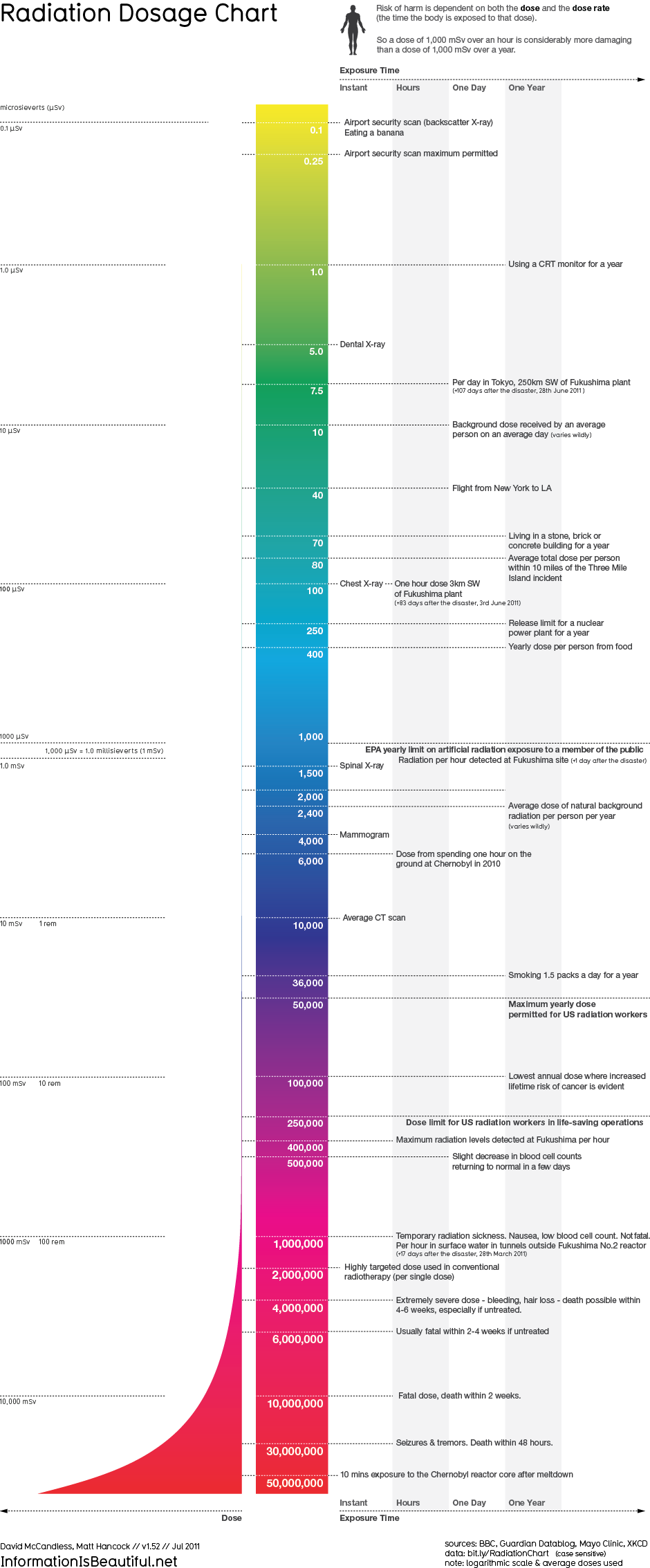Record-High Levels of Radiation Found in Sea Near Crippled Nuclear Reactor
By Go Onomitsu and Sachiko Sakamaki -
Record-high readings of contaminated sea water were found yesterday near the crippled Dai-Ichi nuclear plant, Japan’s nuclear safety agency said, while workers grappled with ways to reduce toxic radiation at the site of the world’s worst nuclear disaster in 25 years.
Radioactive iodine in seawater near the Fukushima plant rose to 3,355 times the legal limit yesterday afternoon from 2,572 times earlier in the day, Hidehiko Nishiyama, a spokesman for the agency, told reporters today.
About 600 workers at the plant have eliminated the threat of total meltdown by injecting and streaming water into and on damaged reactors for the past two weeks. Engineers have connected the complex’s six units with the power grid and seek to repair or replace cooling systems damaged in the disaster. The work has been hampered by discoveries of hazardous radioactive water in and near the reactors.
“Specialists are considering various possibilities and means to contain the nuclear power plant situation and minimize the radiation impact on surrounding areas and to people’s health,” Japan’s Chief Cabinet Secretary Yukio Edano said at a news conference today. “We haven’t reached a conclusion as to what kind of means are possible or effective.”
Among the proposals under consideration, Japan may use a special cloth to cover three reactors at the damaged Dai-Ichi nuclear plant to curb the spread of toxic radiation in the air.
Reactor Shroud
The three reactors all lost their roofs following explosions and fires in the days following the March 11 magnitude-9 earthquake and tsunami, which knocked out power and backup systems used to cool nuclear fuel.
Crews are also considering pumping radioactive water in the reactor buildings to a tanker for safe storage. The U.S. has transported robots impervious to radiation and their operators to the plant at Japan’s request, Peter Lyons, acting assistant secretary of the U.S. Energy Department, told a congressional panel yesterday.
Fukushima plant operator Tokyo Electric Power Co. said it can’t rule out the possibility that water may have flowed into the sea from underground trenches outside the reactor buildings.
Work to drain radioactive water from the basement of the No. 1 reactor turbine building was halted because a storage tank is full, Kazuyo Yamanaka, a manager at the power utility, said today. Tokyo Electric plans to move the contaminated water into a condenser within the same building.
Water Hazards
The level of contaminated water in the basement of the No. 1 reactor turbine building has been reduced by half to 20 centimeters (7.9 inches), Nishiyama said.
Water in a tunnel outside the No. 2 reactor emitted radiation exceeding 1 sievert an hour, a Tokyo Electric spokesman said. Exposure to that dose for 30 minutes would trigger nausea, and four hours exposure might lead to death within two months, according to the U.S. Environmental Protection Agency.
“Workers can’t work near water with radiation levels exceeding 1 sievert per hour, at least not within a few meters,” said Hironobu Unesaki, a professor at Kyoto University’s Research Reactor Institute. “They may need to remotely remove water or rotate workers for very short periods of time.”
Higher readings inside and outside the No. 2 unit indicate that a partial meltdown of fuel rods is “pretty much without a doubt,” Edano, the government spokesman, said yesterday. “This is a grave situation.”
The leakage of plutonium is another sign of damaged fuel, Nishiyama said.
French Connection
France, which relies on nuclear power for 80 percent of its electricity, said it sent five experts in radioactive contaminant removal to Japan this week to aid Tokyo Electric. Anne Lavergeon, president of Areva SA (CEI), the world’s biggest builder of reactors, is scheduled to meet with Japanese government officials and Tepco executives in Tokyo today. Areva had provided uranium-plutonium fuel to the plant. French President Nicolas Sarkozy will visit Tokyo on Thursday to meet with Prime Minister Naoto Kan.
Tokyo Electric said Chairman Tsunehisa Katsumata, 71, will take charge of the nuclear crisis after President Masataka Shimizu, 66, was admitted to hospital for high blood pressure.
There is no danger of contamination outside the 20- kilometer (12-mile) exclusion zone imposed around the Fukushima Dai-Ichi plant, Kan said.
Cleanup probably will take at least five years because of the time needed for radioactivity to diminish so experts can assess the damage, Akira Tokuhiro, a professor of mechanical and nuclear engineering at the University of Idaho, said in an interview. That assessment will determine whether the reactors should be entombed or dismantled to eliminate any further radiation risk, he said.
The number of dead and missing from the earthquake and tsunami had reached 27,593 as of 10 a.m., Japan’s National Police Agency said.
To contact the reporters on this story: Go Onomitsu in Tokyo at gonomitsu@bloomberg.net; Sachiko Sakamaki in Tokyo at ssakamaki1@bloomberg.net
To contact the editor responsible for this story: Patrick Chu at pachu@bloomberg.net

